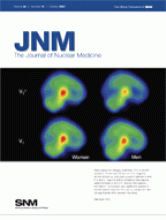PET Chemistry: The Driving Force in Molecular Imaging describes the development of radiochemicals as concepts move from bench work to clinical products. Molecular targets have been applied as tools for personalized medicine in the areas of disease imaging, therapy assessment, selection of patients likely to respond to treatment, and disease prevention. Various cyclotron- and generator-produced isotopes have been used in noninvasive imaging methods.
The first chapter provides an overview of molecular imaging with PET. Chapters 2–5, 7, and 10 describe the production of radiochemicals and the labeling of molecules with 18F and 11C. Chapter 6 reviews the production and application of nonstandard radionuclides such as 45Ti, 86Y, 60Cu, 61Cu, 62Cu, 64Cu, 68Ga, 76Br, 77Br, and 124I. Cyclotron-produced tracers are constrained by the need for a local cyclotron and by its high cost. Alternatively, radionuclide generators can be produced in a well-controlled facility and have a long history of successful clinical application. A generator uses a parent–daughter nuclide pair: A relatively long-lived parent isotope decays to a short-lived daughter isotope, which is used for imaging. The parent isotope is produced at a facility with a cyclotron and can be shipped to a clinical site, where the daughter isotope is eluted. Chapter 8 provides an excellent review of using 68Ga as an alternative to 18F for radiopharmaceuticals. The synthesis of PET radiochemicals must be rapid because the radioisotope will decay during a lengthy chemical synthesis and the risk of radiation exposure may be higher. Chapter 9 describes microwaving methods in 18F radiochemistry. Chapter 12 reviews validation agents from in vitro and animal models. In the preclinical setting, radiopharmaceuticals are synthesized manually. However, manual synthesis is challenging for clinical imaging because clinical agents must meet strict sterility and pyrogenicity requirements, which are validated from batch to batch. In addition, batch-to-batch reproducibility is required to demonstrate suitable radiochemical yield, radiochemical purity, pH, and specific activity; synthesis must occur quickly when radionuclides have a short half-life; and clinical studies requiring multiple patient doses would expose radiochemists to much higher levels of radioactivity. Chapter 11 reviews the automation of radiopharmaceuticals. Chapter 13 describes the role of PET in drug discovery and development.
One limitation of the book is the focus it places on radiochemistry. To increase the diagnostic accuracy of PET tracers, PET instrumentation must be improved. The combination of morphologic/anatomic information from CT or MRI with these PET tracers should provide for accurate target delineation. The book does not describe the roles of CT and MRI in hybrid imaging, markers or immunohistochemistry for biologic correlation and validation, current good manufacturing practices for PET radiopharmaceuticals, or regulatory compliance with the Food and Drug Administration.
Overall, this book provides a basis for understanding PET isotopes and radiopharmaceutical development. This book will be useful to nuclear medicine physicians and scientists and should also be of interest to chemists, physicists, imaging scientists, and students seeking methods in molecular imaging. The book is a good reference to include in a medical library.
Footnotes
-
COPYRIGHT © 2007 by the Society of Nuclear Medicine, Inc.







